A conducting movable rod AB lies across the frictionless parallel conducting rails in a uniform magnetic field →B whose magnitude at t=0 is B0. The rod AB is given velocity v right ward and it continues to move with same velocity through out the motion [The acceleration due to gravity is along negative z−axis, i.e. →g=10m/s2(−ˆk), mass of rod =m.] Which of the following graphs will be the best representation of magnitude of magnetic field versus time.
![A conducting movable rod AB lies across the frictionless parallel conducting rails in a uniform magnetic field vecB whose magnitude at t=0 is B(0). The rod AB is given velocity v right ward and it continues to move with same velocity through out the motion [The acceleration due to gravity is along negative z-axis, i.e. vecg=10m//s^(2)(-hatk), mass of rod =m.] Which of the following graphs will be the best representation of magnitude of magnetic field versus time.](https://d10lpgp6xz60nq.cloudfront.net/physics_images/FIT_JEE_PHY_GMP_ASS_E01_304_Q01.png)
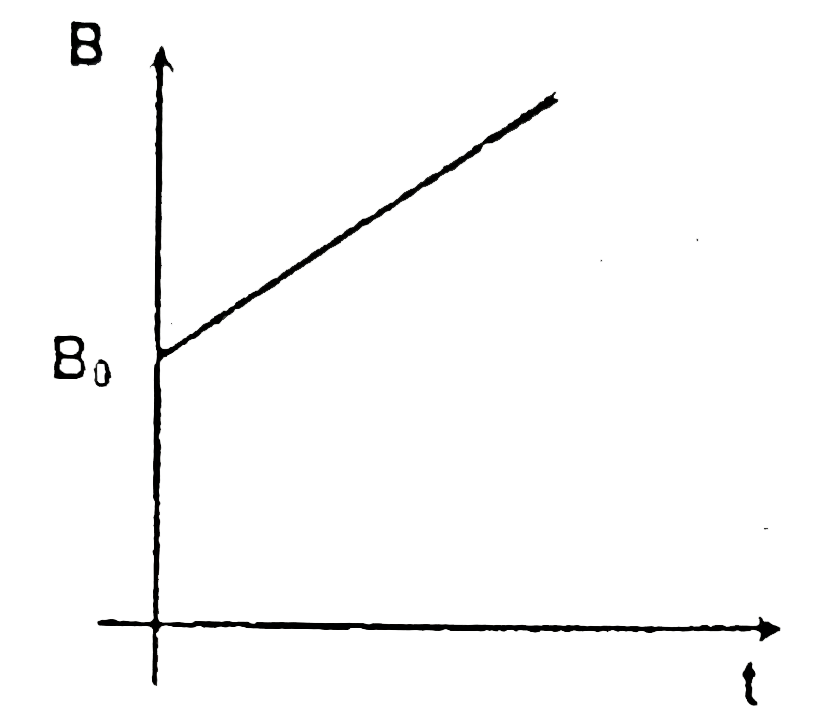
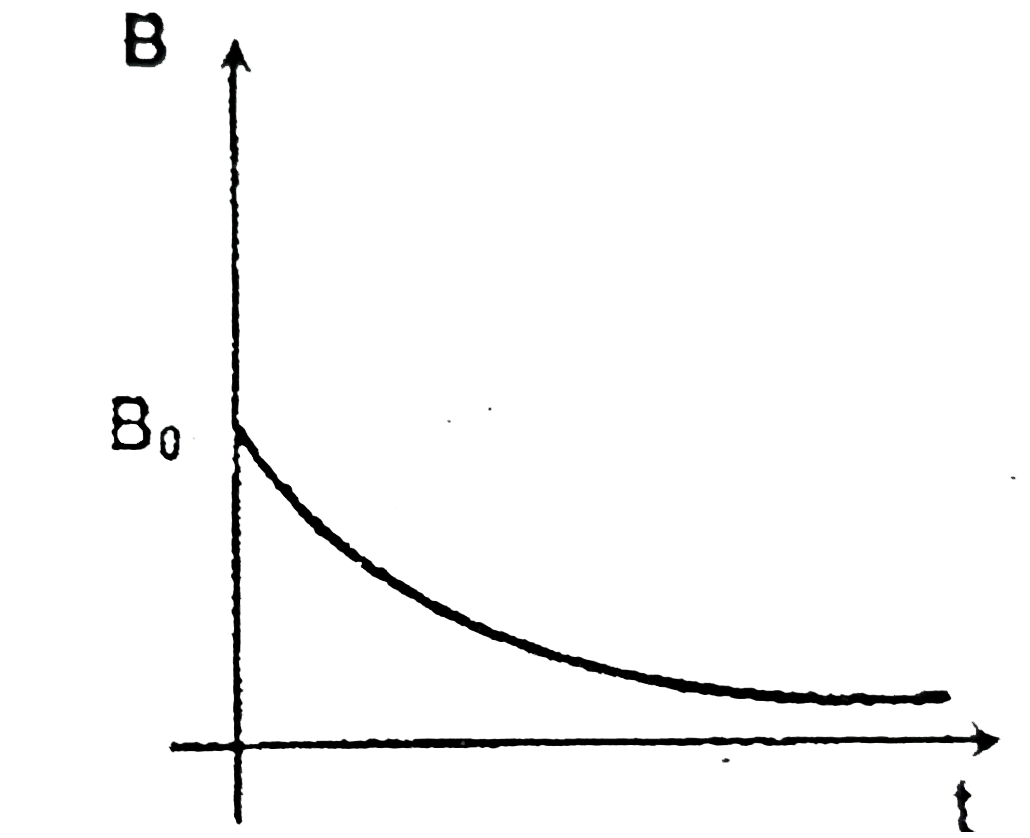
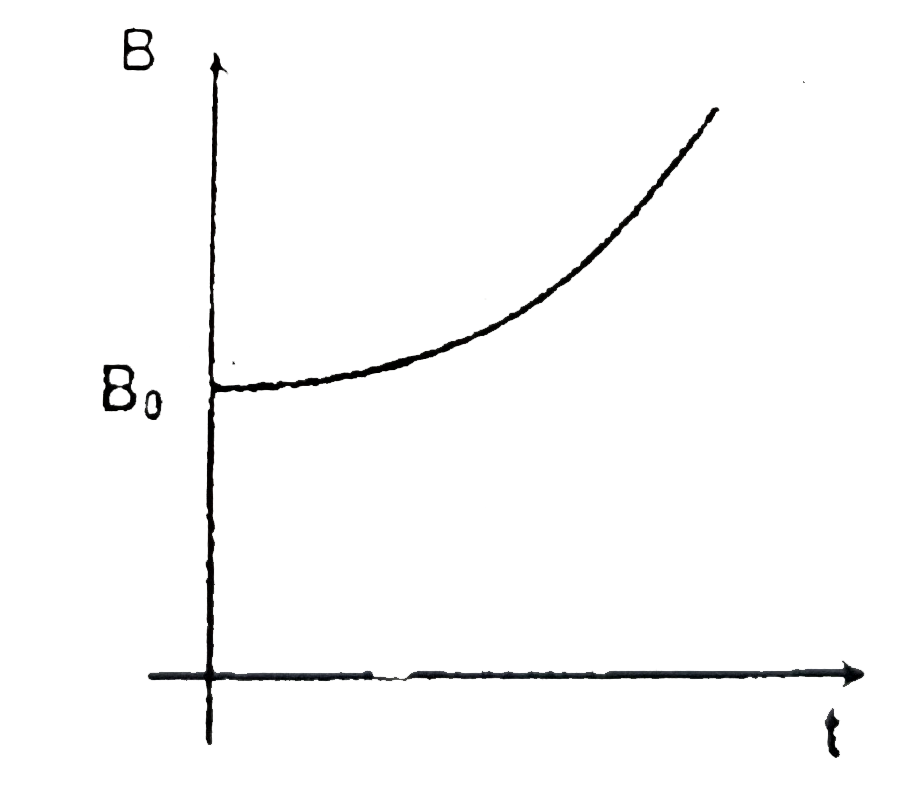

Since speed is constant, it means there is no induced emfϕ=l(b+vt)B
e=lBv+l(b+vt)dBdt=0
⇒(b+vt)dBdt=−Bv
⇒∫BB0dBB=−v∫t0dtb+vt
⇒lnB/B0=−v[1vln(b+vtb)]=ln(bb+vt)
⇒B=B0bb+vt
Second Method :
So flux does not change with time, so
ϕ(1)=ϕ(t+dt)
⇒Bl(b+vt)=(B+dB)l[b+v(t+dt)]
⇒(b+vt)dB+Bvdt=0
⇒dBB=−Vdtb+vt⇒B=B0bb+vt
Topper's Solved these Questions
- GMP ASSESMENTBOOK - FIITJEECHAPTER - GMP ASSESMENTEXERCISE - Assertion & Reason
15 Videos
- GMP ASSESMENTBOOK - FIITJEECHAPTER - GMP ASSESMENTEXERCISE - Multiple Question
58 Videos
- GMP ASSESMENTBOOK - FIITJEECHAPTER - GMP ASSESMENTEXERCISE - Numerical Based
61 Videos
- GENERAL PHYSICSBOOK - FIITJEECHAPTER - GENERAL PHYSICSEXERCISE - MATRIX MATCH TYPE
3 Videos
- GRAVITATIONBOOK - FIITJEECHAPTER - GRAVITATIONEXERCISE - Numerical based Question
2 Videos
Similar Questions
A rod lies across frictionless rails in a uniform magnetic field →B as shown in figure. The rod moves to the right with speed V. In order to make the induced emf in the circuit to be zero, the magnitude of the magnetic field should

View SolutionA small conducting rod of length l, moves with a uniform velocity v in a uniform magnetic field B as shown in fig __
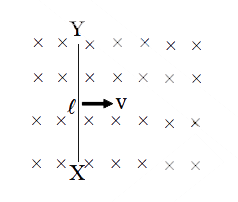
View Solution
Knowledge Check
A conducting bar mass m and length l moves on two frictionless parallel conducting rails in the presence of a uniform magnetic field B0 directed into the paper. The bar is given an initial velocity v0 to the right and is released at t=0. The velocity of the bar as a function of time is given by
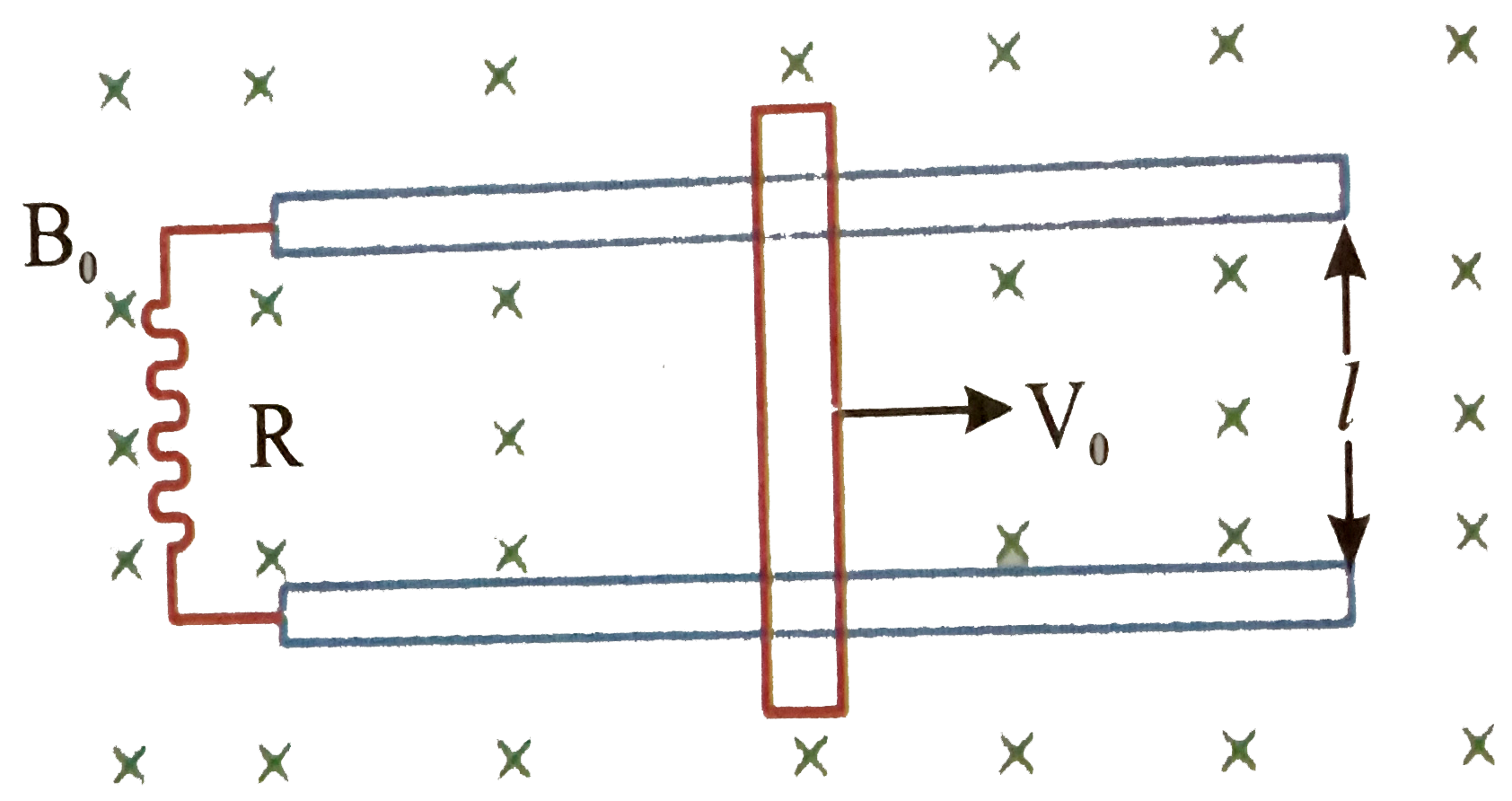 Av0×mRtB20l2Bv0e−B20l2tmRCv0×e−2B20l2tmRDv0e−B20l2t2mR
Av0×mRtB20l2Bv0e−B20l2tmRCv0×e−2B20l2tmRDv0e−B20l2t2mRA conducting rod AB moves parallel to x-axis in a uniform magnetic field pointing perpendicular and into the plane of paper. The end A of the rod
 Agets positively chargedBgets negatively chargedCremains neutralDgets positively charged first and then negatively charged
Agets positively chargedBgets negatively chargedCremains neutralDgets positively charged first and then negatively chargedA small conducting rod of length l, moves with a uniform velocity v in a uniform magnetic field B as shown in fig __
 AThen the end X of the rod becomes positively chargedBThe end Y of the rod becomes positively chargedCThe entire rod is unevenly chargedDThe rod becomes hot due to joule heating
AThen the end X of the rod becomes positively chargedBThe end Y of the rod becomes positively chargedCThe entire rod is unevenly chargedDThe rod becomes hot due to joule heating
A rod AB moves with a uniform velocity v in a uniform magnetic field as shown in figure

View SolutionA conducting bar of mass m and length l moves on two frictionless parallel rails in the presence of a constant uniform magnetic field of magnitude B directed into the page as shown in the figure . The bar is given an initial velocity v0 towards the right at t = 0. Then the

View SolutionA rod lies acrossfrictionless rails in a uniform magnetic field →B as shown in figure. The rod moves to the right with speed V. In order to make the induced emf in the circuit to be zero, the magnitude of the magnetic field should

View SolutionA rod AB moves with a uniform velocity v in a uniform magnetic field as shown in figure.
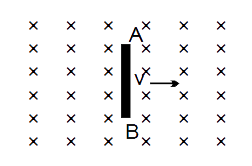
View SolutionA rod with resistance R lies across frictionless conducting rails in a constant uniform magnetic field →B, as shown in the following figure. Assume the rails have negligible resistance. The magnitude of the force that must be applied by a person to pull the rod to the right at constant speed v is

View Solution
